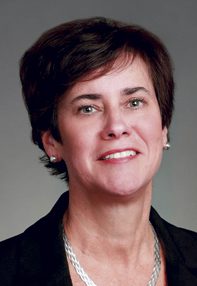FINANCIAL WELLNESS MOMENTUM GROWS

FINANCIAL WELLNESS MOMENTUM GROWS
Helping employees build a firmer financial foundation
By Thomas A. McCoy, CLU
The default advice to defined contribution retirement plan participants is to keep contributing as much as possible, year in and year out. It’s good long-term advice, but of course many plan participants face short-term financial obstacles to carrying it out. The pandemic has brought this problem into clearer focus, as workers at all income levels become more aware of their vulnerability to financial shocks.
Even those who have maintained their jobs through the pandemic are likely to be asking a lot of “what if” questions—about staying healthy, their job security, childcare challenges, and caregiving responsibilities. One tool that employers can provide to help employees deal with short-term financial questions is a financial wellness program.
“In the last couple of years we’ve seen a lot of interest in financial wellness, but probably too little action has taken place,” said Neil Lloyd, head of U.S. defined contribution and financial wellness research for Mercer. “As companies begin to reinvent themselves as a result of the pandemic, I believe many will look at implementing financial wellness solutions.”

“As companies begin to reinvent themselves as a result of the pandemic, I believe many will look at implementing financial wellness solutions.”
—Neil Lloyd
Head of U.S. Defined Contribution and Financial Wellness Research
Mercer
Lloyd was one of several speakers at a recent Employee Benefit Research Institute (EBRI) webinar on financial wellness. He cited EBRI’s Retirement Confidence Survey, which shows that 54% of workers agree with the statement that other financial goals are currently more important to them than saving for retirement, including 38% who “strongly agree.” Eight out of 10 workers say they would like education about how to manage competing financial priorities (up from 70% in 2019).
EBRI’s survey, conducted online in January of this year, collected data from 1,018 workers and 1,024 retirees.
When workers were asked what type of education or financial well-being ser-vices would help them better prepare for retirement, the responses included two initiatives that address shorter-term needs: education/advice on how to manage competing financial priorities— 80% of workers said this would be helpful (compared to 70% in 2019)—and student loan assistance (49%).
While two-thirds of workers believe they have enough emergency savings, 75% of workers said they also would find it helpful if their workplace offered access to an emergency savings account or program.
Broadly speaking, financial wellness includes both retirement planning and the other shorter-term financial obligations. Lloyd cited the Consumer Financial Protection Bureau definition of financial wellness as “the ability to cover day-to-day expenses, absorb financial shock, and plan for the future, thereby leaving you with the ability to lead your life without always worrying about money.”
In the retirement planning realm, employees may not recognize some of the financial wellness help that is commonly available, Lloyd pointed out. “For example, in the study only 24% of employees said they are being offered advice about how much they need to save for a secure retirement. In reality, probably a lot more than 24% of workers are being offered help with how much to save for retirement. It’s a lesson for us as providers because people aren’t seeing it.”
Craig Copeland, senior research associate at EBRI, stated that among the shorter-term financial wellness concerns, one of the most critical is debt management. EBRI’s Retirement Confidence Survey indicates that about 70% of workers with non-mortgage debt say that it has had a negative impact on their ability to save in general; 50% say their ability to contribute to their employer’s retirement plan has been negatively impacted by their non-mortgage debt.
Specifically, for those families with current student loan debt, 64% had more than $20,000—including 31% with student debt over $50,000.
Also, those who consider themselves as having a “debt problem” are more likely to have taken a loan from their retirement savings plan. Almost half who said they had a “major problem” with debt took a loan from their retirement savings plan.
“So, not only are those with a debt problem having a harder time saving for retirement, but they are depleting some of the retirement funds they have already saved,” Copeland said.
For both workers and retirees surveyed by EBRI, the highest percentage who took a loan from their retirement plan (30%) said they did so to pay down credit card debt.
These negative effects of debt were all measured before the pandemic, Copeland noted. “The pandemic is only going to worsen these issues, particularly for those with lower incomes, as they are the most likely to have lost jobs and not be financially prepared.”

“Employers’ support has traditionally focused on retirement, but in recent years, it has expanded to include more holistic support for a person’s financial life, both short term and long term.”
—Lisa Margeson
Managing Director of External Affairs, Retirement and Personal Wealth Solutions
Bank of America
Lisa Margeson, managing director of external affairs, retirement and personal wealth solutions for Bank of America, told webinar attendees, “Employers have come a long way in taking responsibility for their employees’ overall financial wellness. Their support has traditionally focused on retirement, but in recent years, it has expanded to include more holistic support for a person’s financial life, both short term and long term.”
She cited figures from Bank of America’s annual Workplace Benefits Report, which show that employers who say they feel an extreme responsibility for the financial well-being of their employees (beyond retirement savings) has risen from 13% in 2013 to 62% in 2020. The report is based on independently conducted interviews of hundreds of 401(k) plan sponsors and plan participants.
Over the last seven years, the research shows, plan sponsors who offer education and guidance on budgeting have grown from 14% to 63%; saving for college, from 13% to 55%; and managing debt, from 15% to 54%.
Looking at a broad scope of potential financial-wellness-type services, Bank of America’s report listed the following topics as most in demand by workers: retirement savings (90%); healthcare planning (33%); debt management (32%); everyday budgeting and savings (28%); saving for leisure activities (21%).
Employees’ confidence in their own financial wellness has declined over the last two years, according to the Bank of America research. Those who rated their financial wellness as good or excellent fell from 61% in 2018 to 55% in 2019 and 49% in 2020.
“One reason for that decline could be the increasing amount of discussion about financial wellness—among employers, employees, providers and industry experts,” Margeson theorized. “As people are reflecting more on their complex financial journey and they learn about the impact of issues such as rising healthcare costs, they realize they have more work to do to be considered ‘financially well.’”
She noted that 41% of the women surveyed for the current report consider themselves financially well, compared to 58% of the men. Also, women are almost two times more likely than men to cite as their main challenge “not having spare money after paying their monthly expenses.”
Women’s financial journeys through life often present challenges that are not as common to men, Margeson pointed out. “On average, women live five years longer than men. They also carry more student debt than men. Caregiving responsibilities are more likely to fall on women, and women spend 44% of their adult life out of the workforce, compared to 28% for men.
“It is no wonder women trail men in retirement preparedness,” Margeson continued. Bank of America statistics on 401(k) plans show that on average, women have balances that are 39% lower than those of men, and among Baby Boomers they are lagging men by 47%. Women also participate in 401(k)s at a lower rate than men and are 29% more likely to take a withdrawal.
Margeson described Bank of America’s overall approach to financial wellness as creating for an employee a plan that is “personalized, holistic and actionable.
“It starts with assessing an employee’s financial health and providing suggested prioritized actions. It includes a wide breadth of information—from budgeting to debt to retirement planning, even planning their legacy. We provide them a score—tell them how they’re doing—and give them a suggested action plan. What participants want is for us to tell them what to do—not 100 things, just a couple of actions to take to make progress. Where the real magic happens is when you match all this with access to a financial professional.”
Employees who handle their shorter-term financial choices wisely can ease their current financial stress and contribute more to their retirement plan. Financial wellness solutions can help them accomplish both these ends, and build a stronger tie between employee and employer.
The author
Thomas A. McCoy, CLU, is an Indiana-based freelance insurance writer.











